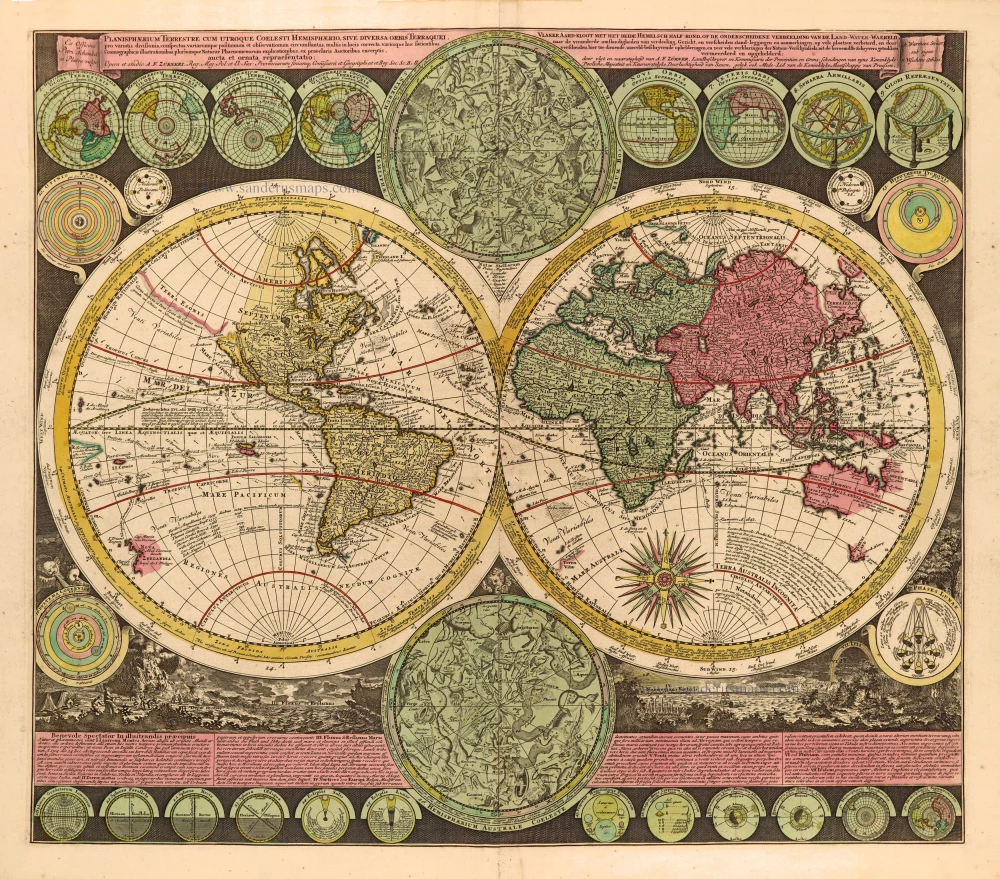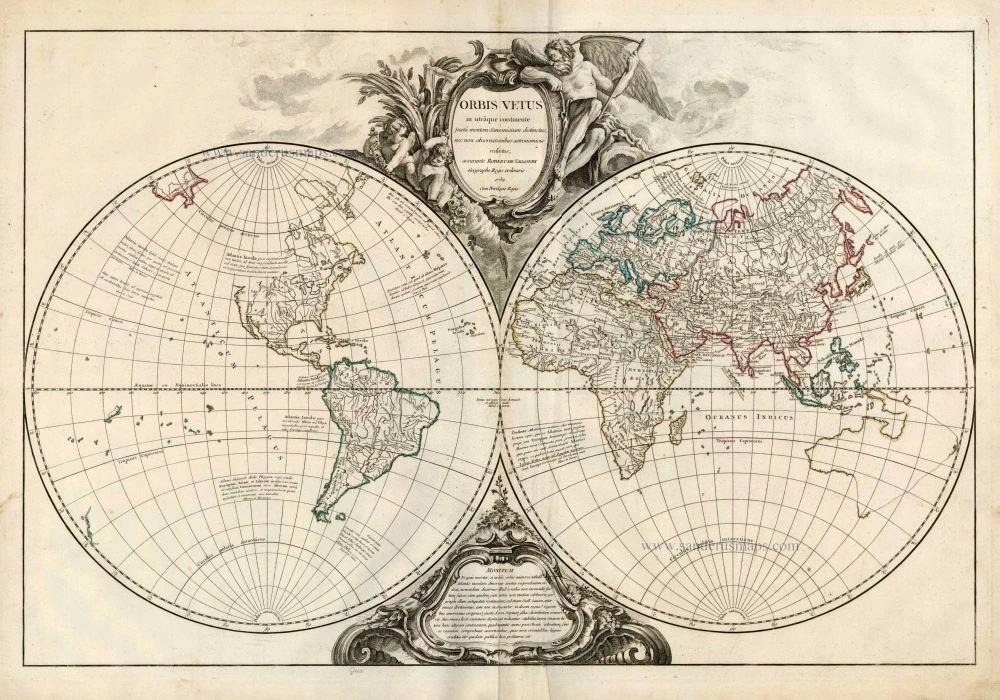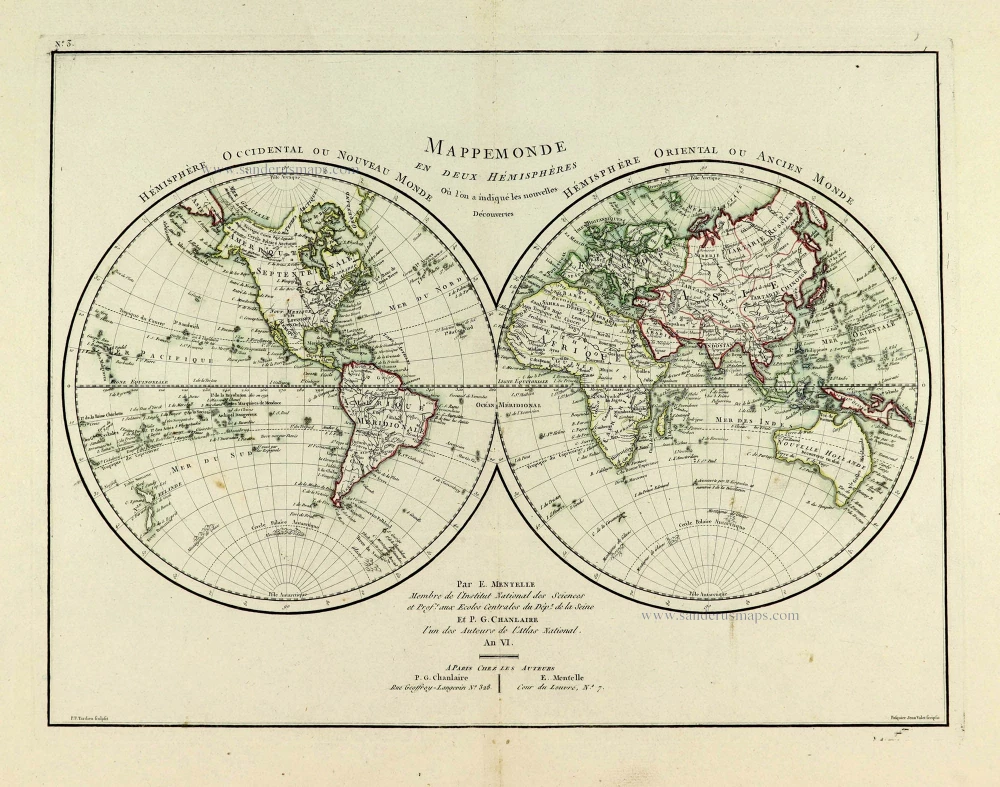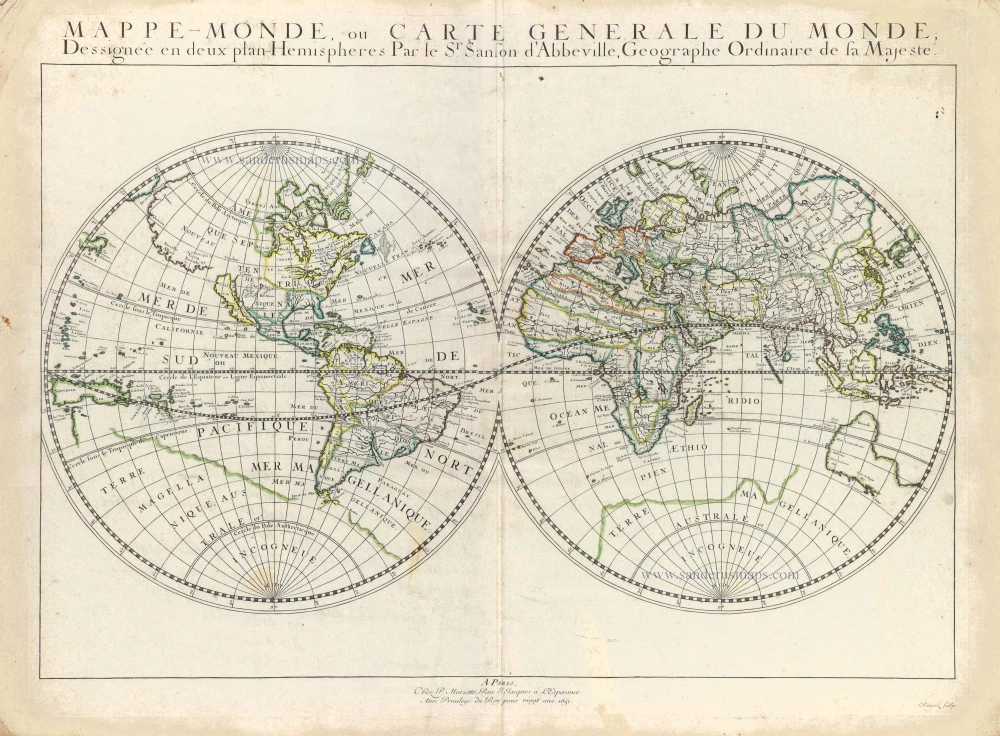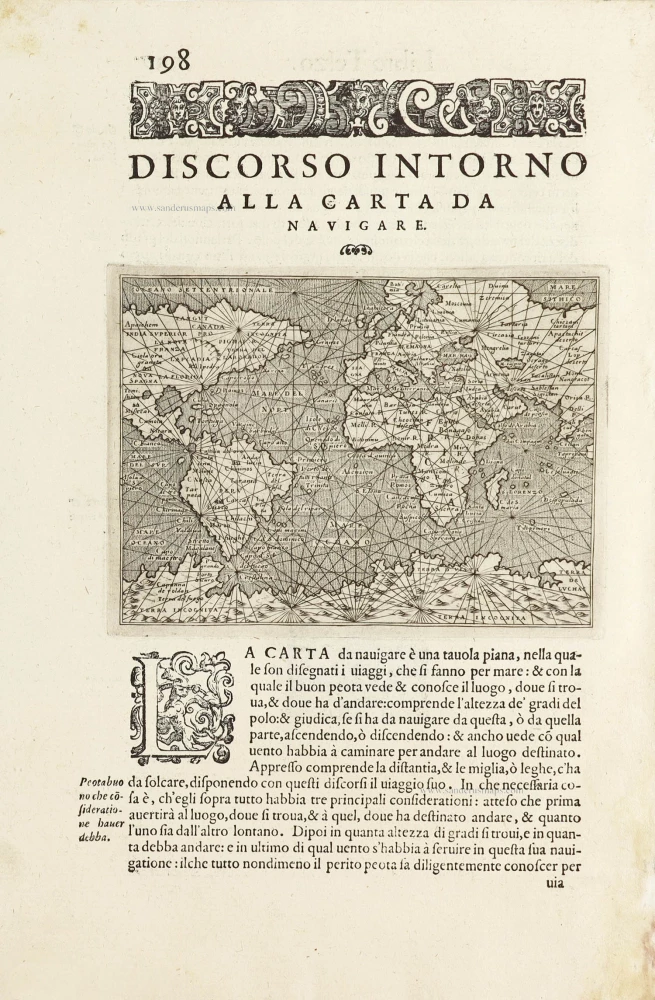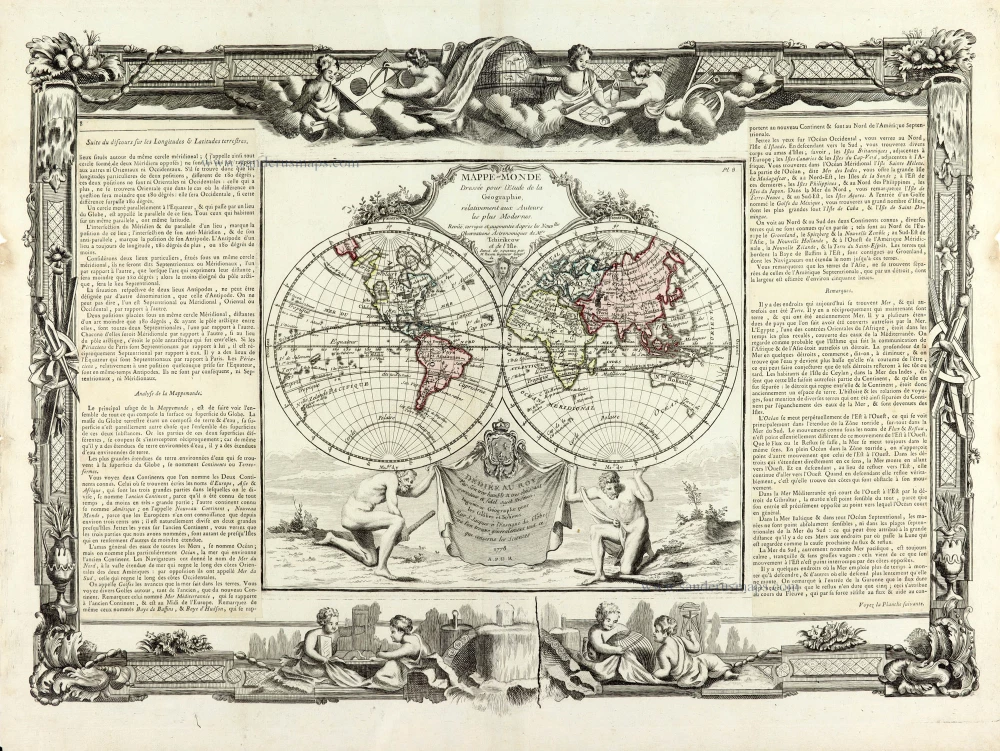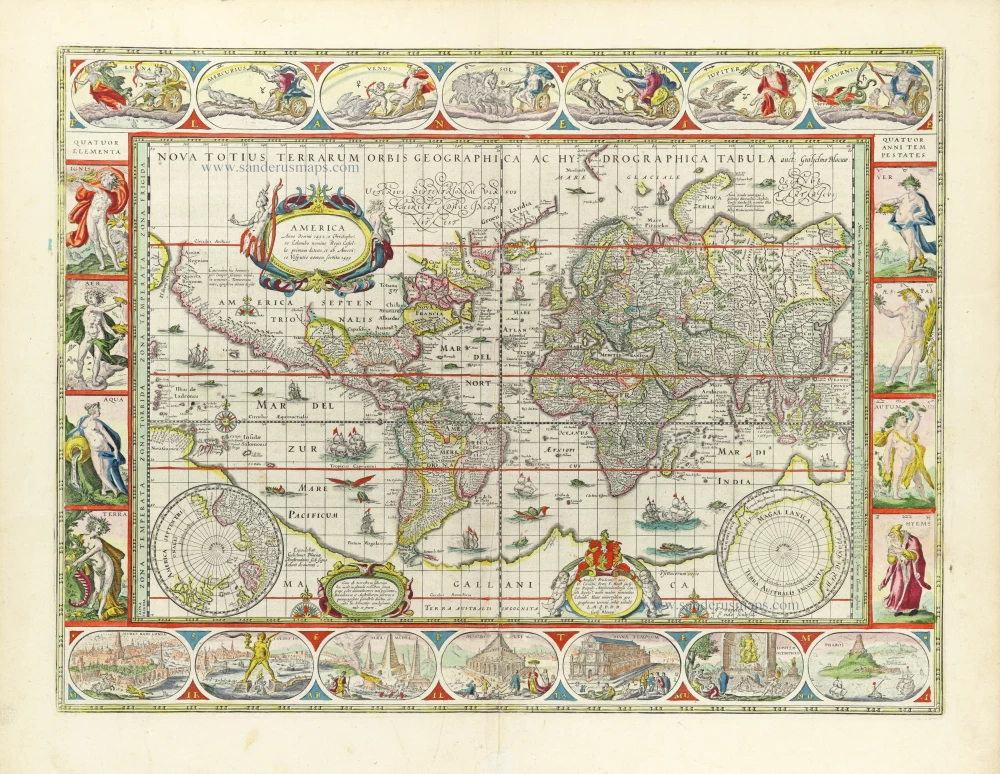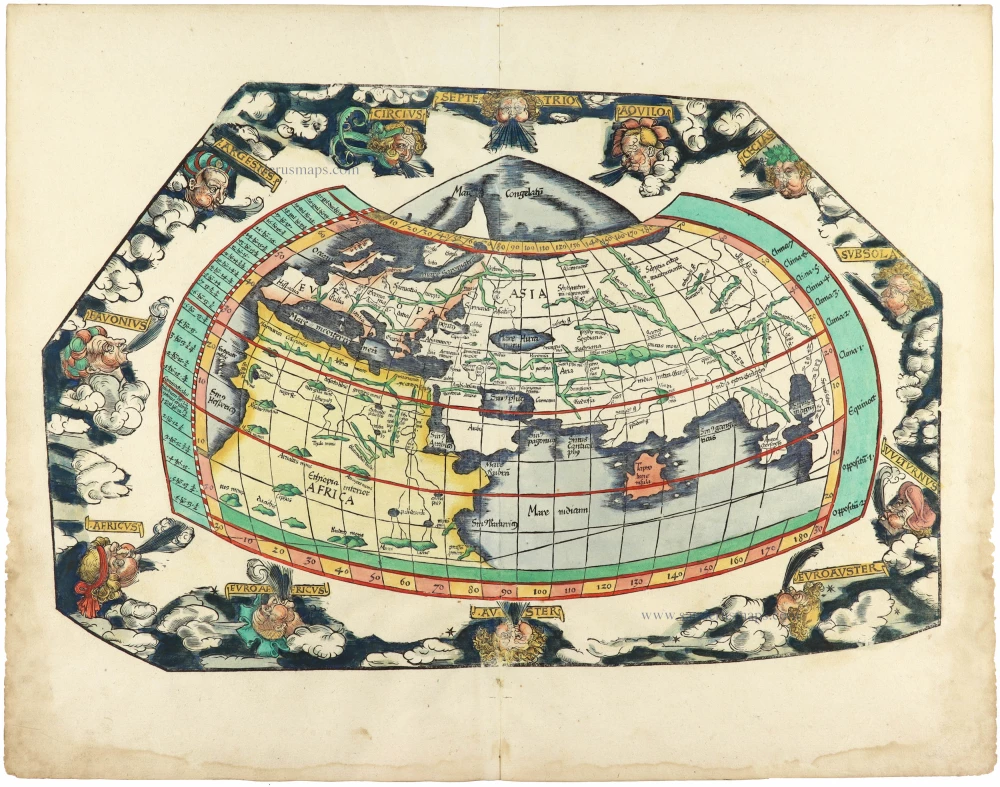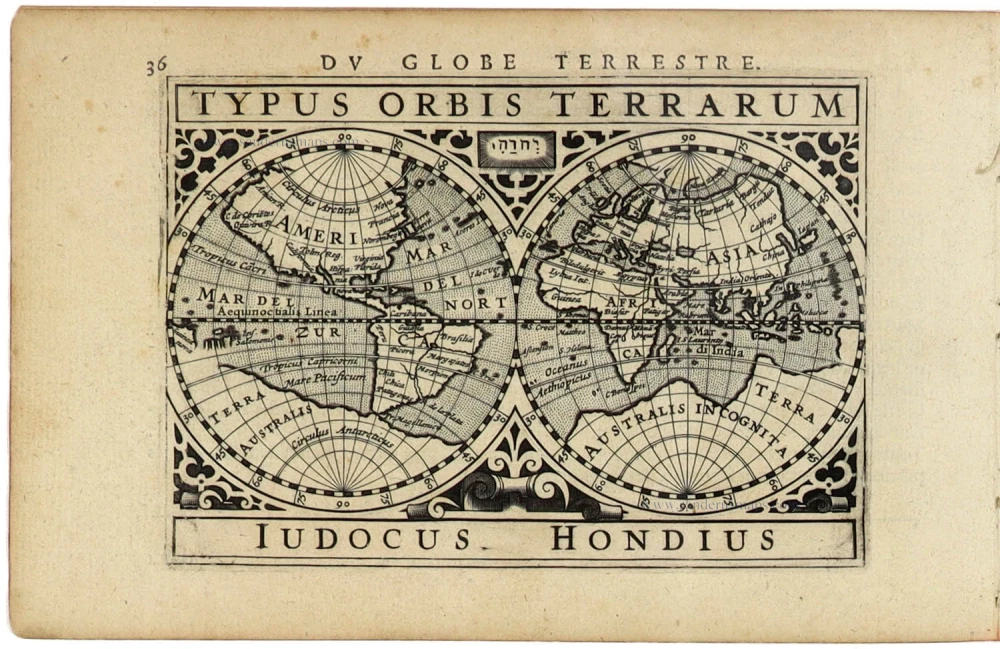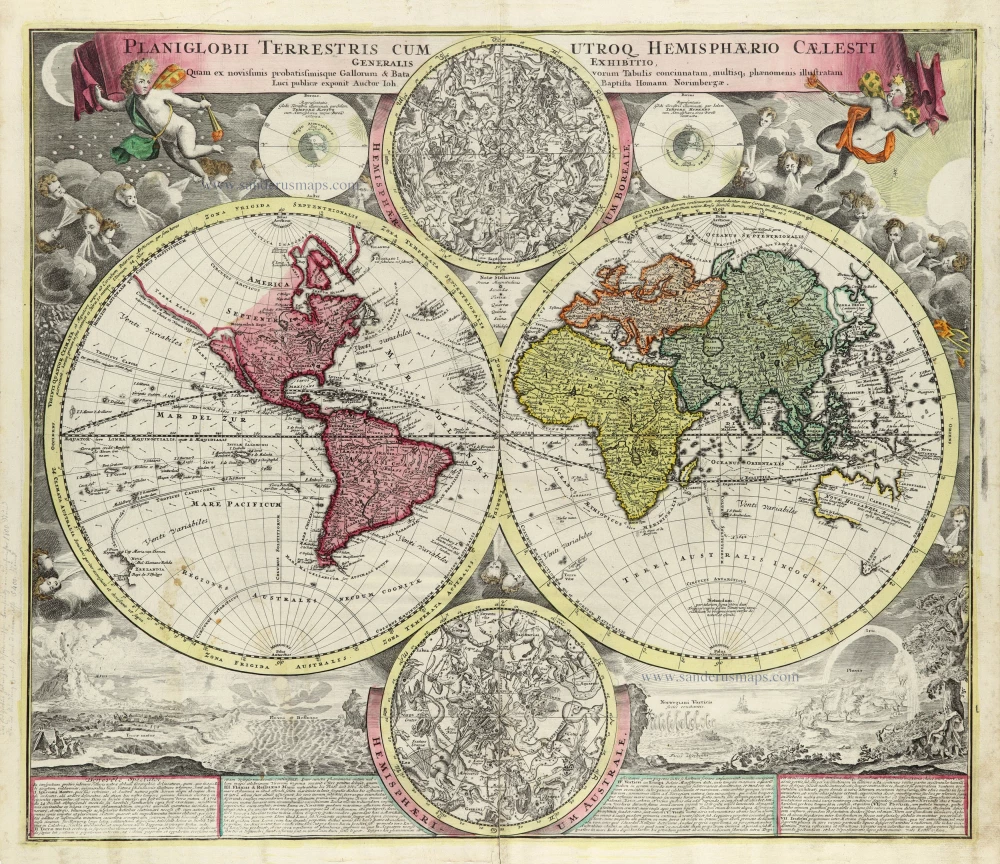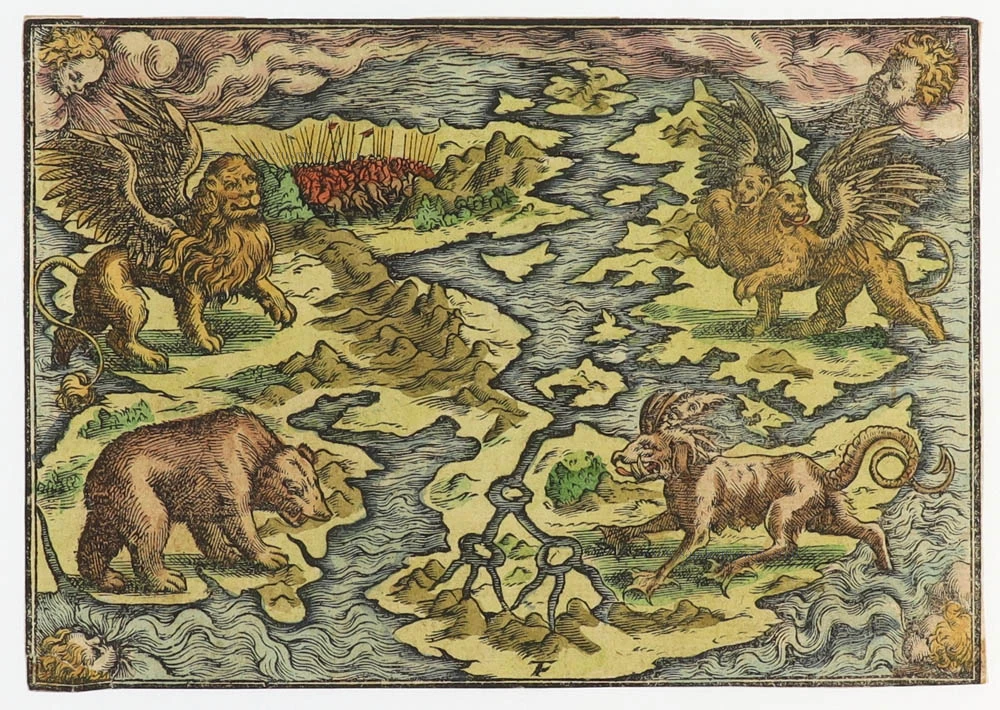World by Zürner A.F., double hemisphere. c. 1700
This striking map shows explorers' routes, including Magellan, Dampier, Tasman, Gaetani and Chaumont. Nova Britannia, an island adjacent to New Guinea, is shown with an inscription saying Dampier discovered it in 1700. Encircling the hemispheres are markings of the winds and climates. According to different projections, set around the border are no less than twenty-six smaller astronomical diagrams and hemispheres of the world. In addition, there are two larger celestial hemispheres and, at the bottom, a panorama illustrating storms, earthquakes, tides, vortices etc. Below, there is a textual commentary on the natural phenomena depicted.
Adam Friedrich Zürner (1679-1742)
A.F. Zürner made his first maps during his studies in Leipzig. In 1713, Elector August dem Starken gave him the order to bring all offices of the Electorate of Saxony in the same way as the two maps of the offices of Großenhain and Dresden. Zürner was supposed to complete the electorate survey, which was begun in 1586 by Matthias Oeder under Elector Christian I.
In 1716 he was awarded the title of "Electoral Saxon and Royal Polish Geographer". In the same year, he was appointed a member of the Prussian Academy of Sciences. Finally, in the late autumn of 1718, he presented his "New Chursächsische Post-Charte".
The geographer Johann Gottfried Gregorii alias Melissantes and the copper engraver Johann Christoph Weigel from Nuremberg used the good map material and Zürner's signature system as early as 1723 to create the continuous Atlas Portatilis Germanicus.
In addition to his surveying work, Zürner wrote several travel guides in the last years of his life. He worked, among others, with the Homann Heirs firm and the Schenk family. He died on December 18, 1742, in Dresden.
Today he is considered a well-known German cartographer. His best-known works were the Neue Chursächsische Post-Charte (16 sheets) and the Atlas Augusteus der Chursächsische Lande (Atlas Augusteus Saxonicus: 40 general and 40 special maps).
Planisphaerium Terrestre cum utroque Coelesti Hemisphaerio, sive Diversa Orbis Terraquei,
Item Number: 28229 Authenticity Guarantee
Category: Antique maps > World and Polar
Old, antique world map - double hemisphere, by Zürner A.F..
Title: Planisphaerium Terrestre cum utroque Coelesti Hemisphaerio, sive Diversa Orbis Terraquei,
pro variatis divisionis, conspectus variarumque positionum et observationum circumstantiis, multis in locis correcta, ...
Opera et studio A.F. Zürneri. ...
Ex Officina Petri Schenkii in Platea vulgo
With numerous polar & celestial spheres, astronomical diagrams, etc. Insular California.
Date of the first edition: c. 1700.
Date of this map: c. 1700.
Copper engraving, printed on paper.
Size (not including margins): 500 x 575mm (19.69 x 22.64 inches).
Verso: Blank.
Condition: Original hand coloured, excellent.
Condition Rating: A+.
References: Shirley (World) #639
From: Schenk, Atlas Contractus sive Mapparum Geographicarum Sansoniarum auctarum et Correctarum. Amsterdam, c. 1700. (Koeman, Sche 2)
This striking map shows explorers' routes, including Magellan, Dampier, Tasman, Gaetani and Chaumont. Nova Britannia, an island adjacent to New Guinea, is shown with an inscription saying Dampier discovered it in 1700. Encircling the hemispheres are markings of the winds and climates. According to different projections, set around the border are no less than twenty-six smaller astronomical diagrams and hemispheres of the world. In addition, there are two larger celestial hemispheres and, at the bottom, a panorama illustrating storms, earthquakes, tides, vortices etc. Below, there is a textual commentary on the natural phenomena depicted.
Adam Friedrich Zürner (1679-1742)
A.F. Zürner made his first maps during his studies in Leipzig. In 1713, Elector August dem Starken gave him the order to bring all offices of the Electorate of Saxony in the same way as the two maps of the offices of Großenhain and Dresden. Zürner was supposed to complete the electorate survey, which was begun in 1586 by Matthias Oeder under Elector Christian I.
In 1716 he was awarded the title of "Electoral Saxon and Royal Polish Geographer". In the same year, he was appointed a member of the Prussian Academy of Sciences. Finally, in the late autumn of 1718, he presented his "New Chursächsische Post-Charte".
The geographer Johann Gottfried Gregorii alias Melissantes and the copper engraver Johann Christoph Weigel from Nuremberg used the good map material and Zürner's signature system as early as 1723 to create the continuous Atlas Portatilis Germanicus.
In addition to his surveying work, Zürner wrote several travel guides in the last years of his life. He worked, among others, with the Homann Heirs firm and the Schenk family. He died on December 18, 1742, in Dresden.
Today he is considered a well-known German cartographer. His best-known works were the Neue Chursächsische Post-Charte (16 sheets) and the Atlas Augusteus der Chursächsische Lande (Atlas Augusteus Saxonicus: 40 general and 40 special maps).

